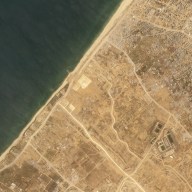To see:
You can’t visit Copenhagen without a trip to Tivoli Gar-dens. It might be tempting to dismiss it as a mere amusement park, but the Danes hold it near to their hearts. The Gardens became a point of national pride after the Germans bombed it in World War II. Even today, or so the legend goes, many of the light fixtures here face down, so anyone flying above cannot see the park is operating.
The Gardens are a quirky, eclectic mix. There’s a concert stage and a grassy meadow, roller coasters and rides. There are also plenty of quiet, serene flowery spots to sit and relax. Eating options range from the quick — popcorn and hot dogs (the Danes are mad about hot dogs!) — to the very formal.
To do:
An absolute must when visiting Denmark is to rent bikes and see the city the way most Danes do: On two wheels. People ride bikes in Copenhagen the way they do cars or the subway elsewhere: to get to work in the morning, to pick up the kids from daycare in the afternoon and to dinner parties at night. In fact, it’s not uncom-mon to see a woman in an elegant dress and four-inch heels pedaling past.
Bike rental shops abound — but if you don’t want to pay the few dollars for a rental, take advantage of the city’s longtime bike share. It’s completely free!
Ride your bikes to see the obligatory Danish tourist attraction — The Little Mermaid statue, with the harbor waters lapping at her unassuming perch. The creation by sculptor Edvard Eriksen is indeed very cute, and a testament to the country’s revered writer Hans Christian Anderson; he wrote the be-loved fairy tale that most Americans know from the Disney movie. But do check out the uglier — and we think cooler — version. A deconstructed interpretation of The Little Mermaid — Danes call her “the genetically modified mermaid” — has been created by Bjorn Norgaard and is a short bike ride away in the Osterbro neighborhood.
To eat:
There has been a food revolution in Denmark, where the emphasis is on cooking with fresh, local ingredients.
Those who follow food and dining trends have likely heard of Rene Redzipi, the head chef at Noma who led the way in locavore dining. But if you can’t get a table at Noma (the wait list can be two months) don’t despair, there are plenty of other options.
Try Manfreds & Vin in Jaegersborggade. This is a hip but relaxed restaurant in what is like the Brooklyn of Copen-hangen. The salad is topped with a few slivers of pickled onion and dressing and the taste is spicy, tangy, sweet and bitter depending on which green you bite.
BioMio in the meatpacking district is another tasty vegetable-heavy restaurant.
Even though veggies are highlighted in many of the dishes anywhere in Denmark, vegetarians should be warned: Expect lots of fish, sausage and cured meats. (This reporter’s mouth is still watering from a dish at a restaurant called Nose2Tail: little pink caviar called lumpfish roe, creme fraiche and lots of fresh dill.)
Try smorebrod while there; it’s the longstanding Danish combo of brown bread smeared with butter and then topped with meats or smoked fish.
The cost
Many American tour-ists have said they find Denmark pricey. A good thing to note is that tips are generally included in both taxi fare and restaurant bills.
Traveling there during the first quarter of the year, January through March, may be cheaper. You can also check out the Wondercool winter festival in February, which celebrates Copenhagen jazz.
Also consider purchasing the Copenha-gen Card. The card gets you free travel on mass transit, as well as car rental. The card also gives you free entry to more than 60 museums and attractions, including Tivoli Gardens. They are available in 24- or 72-hour increments and can be purchased at most hotels.
















